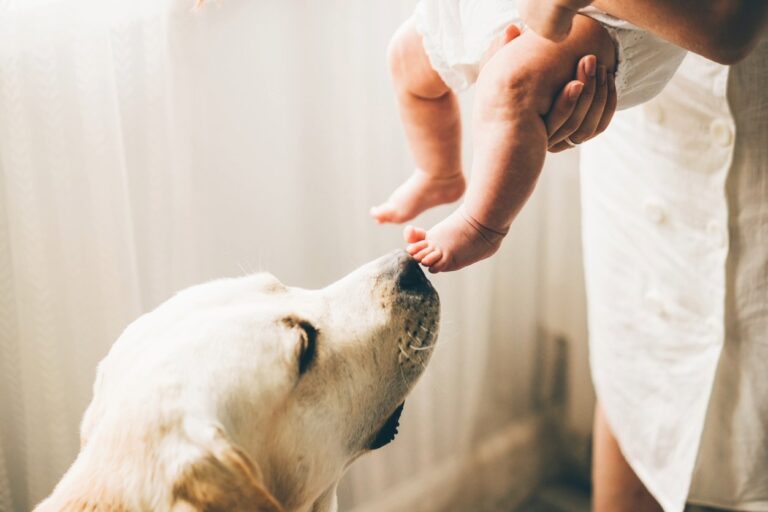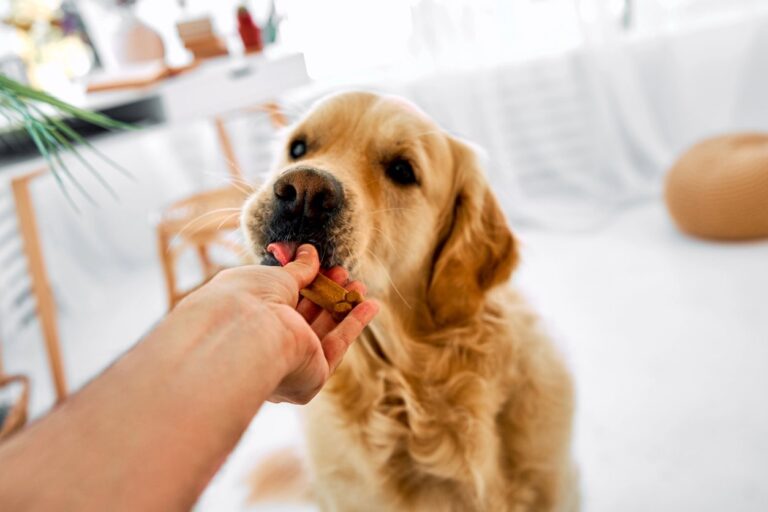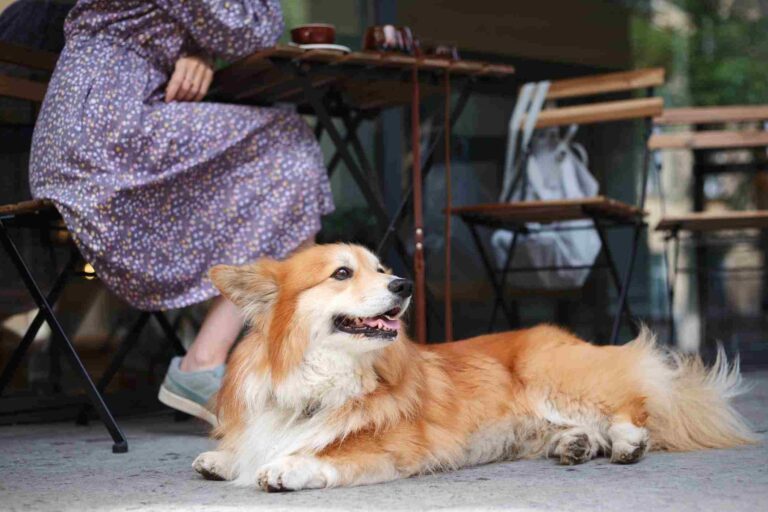When trainers start working with a dog, they will often talk about their food economy. For example, the trainer may have you withhold the dog’s breakfast, so they can use it in their training session. This is adjusting the dog’s food economy, which also changes their motivation to work for their food later on. A human example of this is your paycheck. Most workers get paid after a two-week period or when a task is complete. It keeps them motivated to keep working until the end. In this guide, we will explore how and what to feed your new puppy for training purposes.
Using Kibble Instead of High-Value Mix-ins, Raw, or Wet food
Understanding how and what to feed your new puppy starts with creating a thoughtful food economy as soon as they come home. First, consult with your veterinarian to determine the best brands and food products for your puppy. Altogether, we recommend feeding dogs kibble for meals instead of wet food, raw food, mix-ins, etc. Behaviorally, you may not see a difference when the puppy is three months old. However, imagine that your two-year-old dog has been eating delicious wet food twice a day for two years. It’s unlikely that they will attend to your recall in high distraction settings around dogs, people, squirrels, etc. The “pay” of that treat doesn’t seem worth it. If you reverse the situation, your dog has been eating kibble throughout their life. This time, when you give him fresh chicken for coming when called, the dog is much more likely to attend to the command.
Humans engage in this all the time, too! When your office brings in donuts on Friday mornings, are you more likely to go to work that morning? If there are donuts offered everyday, would you still be more likely to go to work on Friday?
Meals for Training
Besides using kibble for meals, we recommend different ways of offering kibble, so that the puppy is learning to work for their food. Using kibble for training is an obvious start. We recommend using kibble to start teaching basic obedience like name recognition, sit, down, etc.
You probably don’t have time to train your puppy with their meals three times a day, though, in which case we recommend a puzzle toy, mat, or kong. The puppy will still have to work to get their food out.
Meals for Socialization
Use your puppy’s kibble not just at home, but out on walks and in public too. You can start reinforcing good leash manners and polite greetings in public. Plus, if your puppy loves the kibble, it would be a great substitute for treats in new environments. Check out our Co-founder and Certified Dog Behavior Consultant, Sean Savage’s video on puppy socialization.
Meals for Bonding
If you find one of the household members is not bonding with the new puppy, you can have them feed their meals. This is especially great for children to develop a gentle and appropriate relationship with the new family member. We recommend having them lure the puppy into a sit and hand-feeding the puppy. This will teach the dog to automatically put their bottom down at the child’s approach. Tip: Start with the puppy tethered to furniture so the child can walk up to them instead of the puppy approaching and jumping on the child.
Meals and Crate Training
Instead of offering food in a bowl, feed your puppy’s meals in the crate. This will do two things. One, it builds a positive association with the crate. They like to be in the crate because that’s where they are fed. Two, it helps prevent accidents. Put the kibble directly on the plastic crate floor, no bowl. This discourages the puppy from having accidents in the crate because they eat off that floor. Although the puppy is not working for their meal in this scenario, you are certainly using the meal to your advantage.
Note on Free Feeding
You may have guessed at this point that we do not recommend allowing your dog free access to their food and refilling the food bowl when it’s empty. For one, it will be harder to get the dog to work for their food when starting obedience training. In addition, when your dog is sick or not feeling well, food intake is often the first thing an owner notices. A dog that normally finishes their bowl, but only eats half at the next meal is cause for concern. Along the same line, if you need to adjust their weight, it’s difficult to give more or less food to a dog that is free fed.
We recommend leaving the food bowl down for 15 minutes during meal time and then taking it away, even if there is still food in the bowl. Wait until the next mealtime to offer it, as this will teach the dog that food is not always available for them to graze. If your puppy or dog does not finish their meals on a regular basis, consult your veterinarian first. They may recommend switching brands or a topper that will put them on a more regular schedule.
We are here to help
Would you like more help with how and what to feed your new puppy? Teaching your puppy obedience commands, socialization skills, and addressing any behavioral issues early? You can schedule a free consultation with our Pet Behavior Team. We offer a variety of training programs, including private sessions, board-and-train programs, and virtual consultations.Our Certified Applied Animal Behaviorist and Co-founder, Dr. Echterling-Savage, provides virtual training programs. During which she designs a personalized training plan and provides guidance to achieve your training goals.




